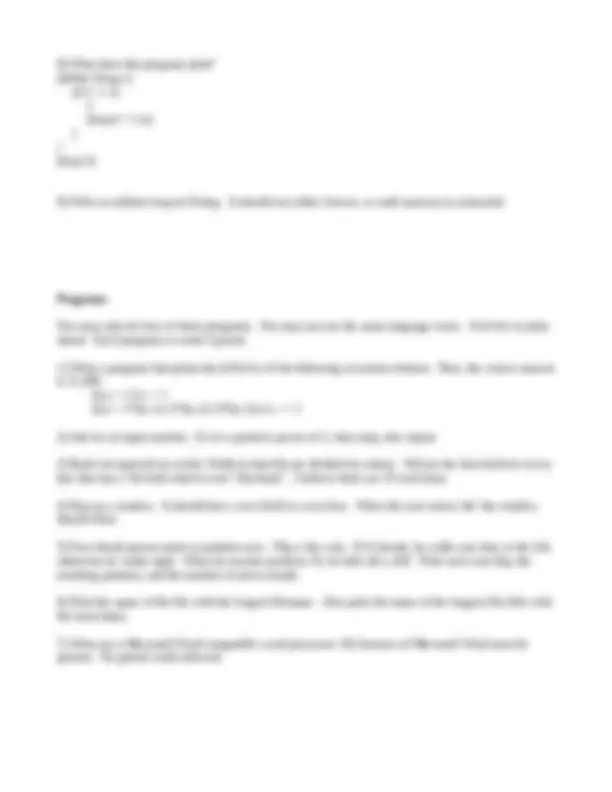



Study with the several resources on Docsity

Earn points by helping other students or get them with a premium plan


Prepare for your exams
Study with the several resources on Docsity

Earn points to download
Earn points by helping other students or get them with a premium plan
Community
Ask the community for help and clear up your study doubts
Discover the best universities in your country according to Docsity users
Free resources
Download our free guides on studying techniques, anxiety management strategies, and thesis advice from Docsity tutors
Various programming questions and exercises covering topics in perl, python, java, c++, lisp, prolog, and regular expressions. The questions cover array size comparison, integer length definition, federal debt calculation, variable naming, regular expression matching, associative array lookup time, lisp function call, infinite loop in prolog, recursion relation calculation, input validation, file manipulation, and microsoft word compatible word processor creation.
Typology: Exams
1 / 2

This page cannot be seen from the preview
Don't miss anything!


Questions